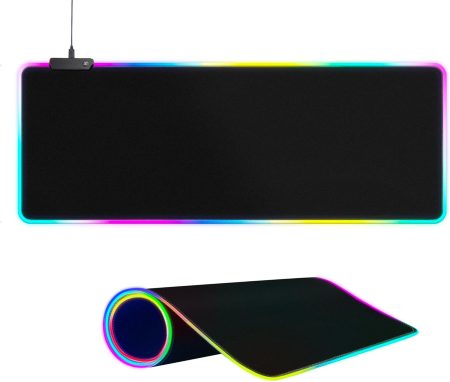Trying to ship a CPU for repair or to your friend? If you ship it the wrong way, your processor could be exposed to a lot of damage, and heat. This way, you may end up damaging the product before someone even gets to use it.
Follow this guide to see what steps you can take to ship your processor safely.
How Can I Ship a CPU?
Shipping a CPU can be a tricky process. If not done properly, you risk damage to the electronic component or expensive voiding of the warranty.
To help you avoid any unfortunate mishaps, we have created this guide with three simple steps that will show you how to ship a CPU with ease.
Packaging
When you package your CPU, you must make sure that it is protected from potential external shocks and collisions. Also, its sensitive and technical parts must be properly secured. For this purpose, you can use Styrofoam, cardboard, aluminum foil, or an anti-static plastic bag to pack your processor. Use appropriate packaging material for the unit based on its weight.

Shipping Box
When you’re shipping your central processor, select a secure shipping box that is the same size as the original packaging. This way you can use the existing foam and place it into your new box. The original packaging acts as extra padding for your CPU to ensure safe arrival.
While using the same size box is convenient and easy, using a slightly bigger box is perfectly acceptable as well.
Shipping
Shipping your processor may be the final step for you, but it is a very important one. There are many shipping options available, each with its benefits and drawbacks depending on how fragile your item is or how quickly you need it delivered.
How Should I Pack My Central Processor Unit?
Shipping a central processing unit involves selecting the type of material and method used to protect the CPU from any damage during transportation.
You can choose to use different methods for packaging your processor. However, your processor must be protected from both inside its enclosure as well as outside of it during transit. Also, ensure that there is no space for the processor to move around within the packaging.
The following are the two best packaging materials to pack your CPU securely:

Packing In Cardboard
Cardboard is an ideal material for packaging CPUs. It’s a sturdy material that provides a secure covering for your processor. Not only that, but the cardboard wrap also prevents any moisture from getting to your central processor, preventing damage. Also, you can easily recycle it at the end of its solid life.
First, cut a piece of cardboard just the size of your processor. Then you can tape it around the CPU or secure it in place with another adhesive like hot glue. Finally, place your sealed CPU into your shipping box along with any other items you’re sending out.
Packing In Anti-Static Plastic Bags
For those who want to make sure they are properly protecting their precious CPU while storing it in a box, the anti-static plastic bag is by far the most recommended option.
These special bags can protect your CPU from electrostatic discharge while in transit or while sitting on a shelf. Besides, it’s easy to find them online for a reasonable price.
Cut a plastic bag and cover your CPU with it. Next, wrap bubble wrap around the processor tightly, then place it in a sturdy box with plenty of cushioning.
This method will make sure your precious processor arrives at its destination safe and sound.
What if You Don’t Have These Packing Materials?
Not everyone can afford cardboard or anti-static plastic bags for CPU packaging. Thankfully, other options can help protect your CPU and still keep the overall cost down!
Styrofoam and aluminum are light alternatives to plastic and cardboard. Both are easy to work with and offer great performance at a low price.

Styrofoam
Styrofoam is an excellent shock absorber, which means it will protect your CPU during shipment. Cut your foam to fit the size of your processor and stick on a few sheets of bubble wrap for extra cushioning.
Aluminum Foil
To help protect your processor from corrosion, you must use aluminum foil. Ultra-violet rays, water vapor, and oxygen can cause damage to your processor which leads to corrosion.
Aluminum foil is made up of aluminum oxide; a non-corrosive metal. Besides, it also acts as a strong barrier between liquids and gasses.
With the help of aluminum foil and bubble wrap, you can ensure your CPU processor arrives in a safe and clean state. Just make sure to completely cover the processor with foil and put it in a box with lots of bubble wrap.
Can I Store My CPU After Packing?
Yes, you can store your processing unit after packing it securely. Storing your processor properly ensures that your investment is protected and ready to go when you need it.
If you don’t have the original box, you can use anti-static plastic bags or another CPU storage box. However, the best place to store your processor is within its original box. Moreover, don’t forget to protect your unit from excessive temperature and sun damage by giving it adequate shade.
Which Shipping Method Should I Choose?
While there are all sorts of shipping services out there, only a few are suitable for sensitive devices like CPUs. Once your CPU shipping box is ready, you can use any delivery service of your choice to send it where it needs to go.
It is usually best to use a delivery service that has been recommended by someone who has used their services. Several reputable companies will offer various services, including shipping, tracking, and confirmation of delivery.
You can also use the mail to ship your CPU as a normal parcel but ensure to double-check the address you enter before sending it.
Wrap Up!
If you want to learn how to ship a CPU, this guide is the best place to learn how to ship a CPU. We’ve broken down the process into easy, actionable steps that shorten your learning curve. Make sure you use the right and durable packaging material like cardboard, otherwise, Styrofoam and aluminum make the best alternatives.














